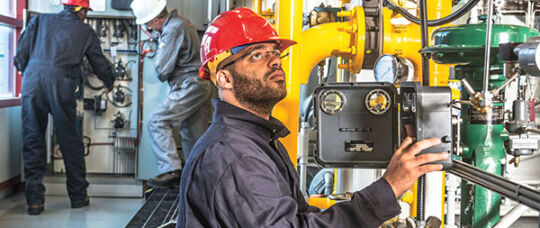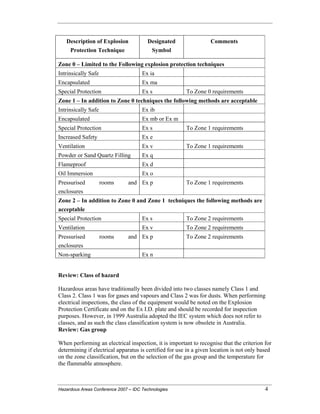The 7-Minute Rule for Roar Solutions
The 7-Minute Rule for Roar Solutions
Blog Article
Roar Solutions Can Be Fun For Anyone
Table of ContentsAll about Roar SolutionsFacts About Roar Solutions RevealedRoar Solutions Fundamentals Explained
In order to secure setups from a potential surge a technique of analysing and identifying a possibly harmful area is required. The purpose of this is to ensure the correct choice and setup of tools to eventually avoid a surge and to make certain safety and security of life.
(https://padlet.com/thomascarrillo4740/roar-training-solutions-jrrziydpbb7m3xsa)
No tools should be set up where the surface area temperature level of the tools is above the ignition temperature of the provided danger. Below are some usual dust dangerous and their minimal ignition temperature level. Coal Dirt 380C 225C Polythene 420C (thaws) Methyl Cellulose 420C 320C Starch 460C 435C Flour 490C 340C Sugar 490C 460C Grain Dust 510C 300C Phenolic Material 530C > 450C Aluminium 590C > 450C PVC 700C > 450C Soot 810C 570C The probability of the threat existing in a focus high enough to cause an ignition will vary from area to area.
Harmful location electric devices perhaps made for usage in greater ambient temperature levels. Area Repair Service By Authorised Employee: Challenging screening might not be called for nonetheless specific procedures may need to be adhered to in order for the equipment to keep its 3rd party ranking. Each piece of devices with a harmful score need to be reviewed separately.
Roar Solutions - The Facts
The equipment register is a comprehensive data source of tools documents that includes a minimum set of areas to determine each product's place, technical parameters, Ex category, age, and environmental information. The ratio of In-depth to Close examinations will certainly be determined by the Tools Threat, which is examined based on ignition risk (the probability of a resource of ignition versus the possibility of a flammable ambience )and the hazardous location category
( Zone 0, 1, or 2). Applying a robust Risk-Based Examination( RBI )method is vital for making sure compliance and safety and security in handling Electrical Devices in Hazardous Areas( EEHA).
The Basic Principles Of Roar Solutions

In regards helpful hints to eruptive risk, a dangerous area is an environment in which an eruptive ambience exists (or may be expected to be existing) in amounts that need special safety measures for the building and construction, installment and use tools. electrical refresher course. In this post we check out the obstacles encountered in the work environment, the danger control measures, and the called for proficiencies to work securely
It is a consequence of modern-day life that we manufacture, store or take care of a series of gases or fluids that are considered combustible, and a variety of dirts that are deemed flammable. These substances can, in specific conditions, develop eruptive environments and these can have major and terrible effects. The majority of us are familiar with the fire triangle eliminate any among the three elements and the fire can not happen, but what does this mean in the context of harmful locations? When damaging this down right into its easiest terms it is basically: a mix of a particular amount of release or leakage of a certain compound or material, combining with ambient oxygen, and the visibility of a resource of ignition.
In the majority of instances, we can do little about the degrees of oxygen airborne, but we can have significant influence on resources of ignition, for example electric devices. Harmful locations are recorded on the unsafe location category illustration and are identified on-site by the triangular "EX LOVER" indicator. Here, amongst other crucial details, areas are split into 3 kinds depending on the threat, the likelihood and period that an explosive environment will certainly exist; Zone 0 or 20 is considered one of the most unsafe and Zone 2 or 22 is deemed the least.
Report this page